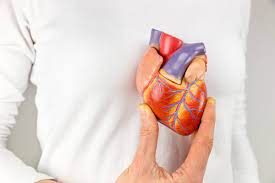In a groundbreaking study, researchers have unveiled a biorobotic heart, a fusion of biological and robotic elements, capable of beating like a human heart. This innovative creation, announced on January 10, 2024, and detailed in the journal Device, marks a significant step forward in cardiac research and surgical training.

The heart, which combines a biological heart with a silicone robotic pump, specifically focuses on a valve on the left side of the heart. This valve simulator is designed to replicate the structure, motion, and functionality of a healthy or diseased heart. This capability allows surgeons and researchers to conduct various interventions and gather real-time data, offering an unprecedented level of study and understanding of heart conditions.
Senior author Ellen Roche, a renowned biomedical engineer at the Massachusetts Institute of Technology, highlighted the simulator’s immense potential. “It’s a powerful research tool for studying different heart valve conditions and interventions,” she noted. Besides being a boon for researchers, the simulator promises to be an invaluable resource for surgical training. It provides a practical platform for clinicians, medical students, and trainees to hone their skills. Furthermore, it offers device engineers a unique opportunity to test new designs, and even helps patients to grasp a better understanding of their conditions and potential treatments.
Bridging the Gap in Cardiac Intervention Research
Traditional methods of testing new cardiac interventions have relied heavily on heart simulators and animal studies. However, these approaches come with significant limitations. Current heart simulators, while useful, fail to fully capture the heart’s complexity and typically have a very short usable duration of two to four hours. Animal studies, on the other hand, are not only costly and time-consuming but also often yield results that do not accurately translate to human conditions.
The biorobotic heart addresses these challenges by offering a more cost-effective and long-lasting alternative, with a shelf life extending to several months. The research team, focusing on mitral regurgitation—a condition affecting approximately 24.2 million people globally—demonstrated the biorobotic heart’s efficacy. This condition, characterized by the improper closure of the valve between the left heart chambers, can lead to severe complications, including heart failure. The complexity of the valve’s structure makes surgeries to correctthis disorder highly intricate, underscoring the need for advanced technology and precise surgical techniques.
To replicate the intricate workings of the mitral valve in both healthy and diseased states, the team constructed the biorobotic heart using a pig heart as a model. They replaced the muscle in the left chamber with a soft robotic pump system made of silicone, powered by air. This system imitates the heart’s natural movements, twisting and squeezing to pump artificial blood through a mock circulatory system, effectively simulating the rhythm of a biological heart.
When researchers intentionally damaged the mitral valve in the biorobotic heart, it exhibited characteristics akin to a leaky heart valve. This simulation provided a unique opportunity for cardiac surgeons to correct the damage using three different techniques: anchoring the flailing valve leaflet tissue with artificial chords, replacing the valve with a prosthetic one, and implanting a device to aid the valve leaflet in closing. All three procedures successfully restored normal pressure, flow, and heart function.
Notably, the biorobotic heart allows for real-time data collection during surgical procedures. Its compatibility with current imaging technologies commonly used in clinics further enhances its practicality and usefulness in medical settings. This innovative device is set to revolutionize how cardiac interventions are studied and performed, offering a new horizon in cardiac healthcare and research.